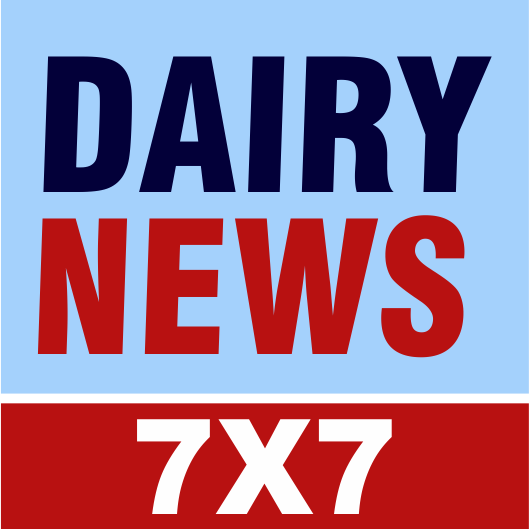Silence is the new language of masses. We have seen a huge price increase in almost all inputs to the dairy industry in the last one year. Finally the milk prices in India have also become dearer by Rs 2 from this month. As per the news in HT on July 13th , “Retail inflation as measured by the Consumer Price Index (CPI) grew at 6.26% in June on the back of higher food and fuel prices.” This is the second straight month that India’s benchmark inflation measure has been above the Reserve Bank of India’s upper tolerance level. Irony is that no one is talking about it.
The prices of Feed inputs , Diesel, petrol, gas, packaging materials , logistics have all gone up by over 50% in last few months but no one is not talking about it. India is the producer of the costliest milk in the world. Nearly 17 million dairy farmers are pouring around 3-4 litres of milk at 190000 village level societies, twice a day. There is a huge need of logistical support to transport this milk from villages to the chilling-centers and the milk-processing-plants.
Logistics cost of milk in India
The average logistics cost for milk procurement is around Rs 3-4 per liter depending upon various seasons. The transportation cost of finished milk will also be around the same till the last mile delivery. The inbound logistics cost for all the materials except milk is also around Re 0.5 per liter. It means that the total transportation cost per liter of milk is not less than Rs 6-7 per liter. Let us look at the change in the diesel prices in the last 15 months.

Now let us try to understand the role of the government behind such a massive rise in the fuel prices. We are seeing an unprecedented rise of around Rs 30 per liter in diesel in the last 15 months which is almost 50% increase. The breakdown of this price is as follows . Irony is that no one is talking about it.

India ranked first in taxing fuel globally in May 2020
We can clearly see that there is an Excise duty of 35.65 percent (Rs 31.80) while VAT in Delhi is 14.62 percent (Rs 13.04) of the retail price of Rs 89.18 a litre. Which means that the excise and vat are contributing over 50 % of the total cost of the fuel. Interestingly no one is talking about this too. India has joined the bandwagon of the developing world in becoming the top tax charging nation on Fuel. One can understand the higher tax charged by the developing world as they have a social security network. In India however it is very difficult to comprehend the same reasoning.

We can see that almost 30-40% of our total milk-transportation-cost ( Rs 2.5-3.5 per liter) is due to higher government-taxes on the fuel. How can we control inflation by charging over 50% taxes on fuel? We have not yet discussed the impact of this transportation cost on the input cost of the dairy farmers. Let us look at the government plans for various schemes which have been announced recently. Almost all the schemes from the DAHD are pointing towards increasing the population of the dairy cattle rather than the productivity. The schemes are designed meticulously so as to manage a mobilisation of 4-5 times of the ministry’s-total-outlay for the scheme.
Schemes must be SMART
Some state-governments are doing a better job by offering pointed support like Export-subsidies on SMP.. The ultimate goal of the scheme is to clear off some part of the huge stocks of SMP. It doesn’t matter whether only one cooperative will be the beneficiary, as the cascading effect will be good for everyone. The state-government by spending Rs 150 crores only will be able to clear-off 30-50000 MT of SMP-stocks from the country.
Understanding question is the real answer
Are the policy makers keeping the following points in their mind while drafting policies apart from their relevant development agendas?
a. Will the scheme at any point in future be making small and marginal farmers sustainable?
b. Will the scheme at any point of time in future be making dairy cooperatives sustainable?
c. Will the schemes at any point in future be defining KPIs and target profits for the Cooperatives as done in the corporate sectors?
d, Will the schemes at any point in future be level playing field for the dairy sector by linking it to open markets and demand-supply dynamics?
e. Will the schemes at any point in future be thinking of dairy economics instead of livestock development?
f. Will the schemes at any point in future be considering the interests of the dairy industry and not dairy cooperatives alone?
At the end , I will like to share quotes by a great economist and Noble prize winner ,Milton Friedman who will be having his 109 th birth anniversary on July 31st as follows :
“The government solution to a problem is usually as bad as the problem” .. Milton Friedman
I wish this is not true in the case of all the decisions which our policy makers are taking for the dairy development in the country.
At times I feel that writing is a struggle against silence and that’s what I am doing.
Let us look at the coming festival times and wish a great time ahead for all stakeholders from the dairy industry .
A blog by Kuldeep Sharma , Chief editor , Dairynews7x7

